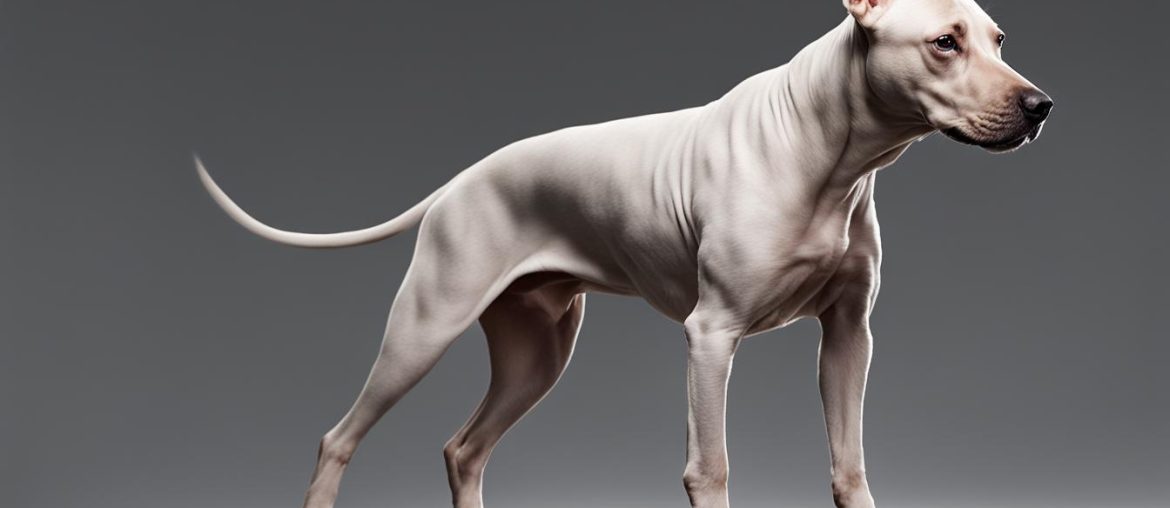Hairless dogs are a unique and intriguing breed that captures the attention of dog lovers around the world. From their distinct appearance to their hypoallergenic qualities, hairless dog breeds have a lot to offer. In this article, we will delve into the world of hairless dog breeds, uncovering their fascinating history, characteristics, and availability for adoption or purchase.
Key Takeaways:
- Hairless dog breeds have a rich history and cultural significance.
- They are known for their distinctive appearance and hypoallergenic qualities.
- Proper care and grooming are essential for the well-being of hairless dogs.
- Hairless dogs can provide comfort and companionship as therapy or emotional support animals.
- When choosing a hairless dog breed, consider factors like size, temperament, and grooming requirements.
The Fascinating History of Hairless Dog Breeds

The history of hairless dog breeds is as intriguing as their distinctive appearance. These unique breeds have captured the attention of dog enthusiasts for centuries. Let’s take a closer look at three notable hairless dog breeds: the Mexican Hairless Dog, the Chinese Crested, and the Peruvian Inca Orchid.
The Mexican Hairless Dog
Also known as the Xoloitzcuintli or Xolo, the Mexican Hairless Dog holds great cultural significance. Revered by the ancient Aztecs, these dogs were believed to have healing properties and were often used in religious ceremonies. Today, they are cherished as loyal and affectionate family pets, with their smooth, hairless skin and elegant build.
The Chinese Crested
The Chinese Crested has a rich history that dates back over 2,000 years. They were highly valued by Chinese sailors who used them as companion dogs and believed they possessed the ability to ward off evil spirits and bring good luck. With their unique combination of a hairless body and a flowing crest of hair on the head, feet, and tail, Chinese Cresteds are known for their captivating appearance and playful personalities.
The Peruvian Inca Orchid
The Peruvian Inca Orchid is another ancient hairless breed with roots in the Inca civilization. They were highly prized by the Inca people for their ability to provide warmth and companionship. Today, these elegant and intelligent dogs make devoted family pets. With their sleek bodies and graceful movement, Peruvian Inca Orchids are a true testament to the beauty of hairless dog breeds.
| Breed | Origin | Cultural Significance |
|---|---|---|
| Mexican Hairless Dog | Mexico | Revered by the ancient Aztecs for their magical properties |
| Chinese Crested | China | Believed to bring good luck and ward off evil spirits |
| Peruvian Inca Orchid | Peru | Valued by the Inca civilization for warmth and companionship |
These hairless dog breeds have a fascinating history that illuminates their cultural significance and enduring appeal. From their origins in ancient civilizations to their cherished roles as loyal companions, Mexican Hairless Dogs, Chinese Cresteds, and Peruvian Inca Orchids continue to capture the hearts of dog lovers around the world.
Characteristics of Hairless Dog Breeds

Hairless dog breeds possess unique characteristics that set them apart from their furry counterparts. Their lack of fur gives them a distinct appearance and makes them an appealing choice for individuals with allergies or those who prefer low-shedding pets. While their appearance may vary from breed to breed, hairless dogs often share common traits that make them stand out.
Distinctive Appearance
The most striking characteristic of hairless dog breeds is their lack of fur. This characteristic gives them a unique and eye-catching appearance that sets them apart from other dogs. Their exposed skin is often smooth and may have various patterns, colors, or markings, making each hairless dog truly one-of-a-kind. Without a coat to protect them, hairless dogs’ skin may require additional care to prevent sunburn and dryness.
Hypoallergenic Qualities
One of the key advantages of hairless dog breeds is their hypoallergenic nature. These breeds produce fewer allergens compared to their furry counterparts, making them a viable option for individuals with allergies or asthma. While no dog breed is completely hypoallergenic, hairless breeds tend to cause fewer allergic reactions because they don’t shed as much fur. However, individual reactions may vary, and it’s recommended to spend time with a hairless dog before committing to ownership.
Hairless dogs come in various sizes, ranging from small breeds like the Chinese Crested to larger breeds like the Xoloitzcuintli. Despite their lack of fur, these breeds still require regular grooming and proper care to maintain the health of their skin. A regular bathing routine, moisturizing, and protecting their skin from the sun are essential for their well-being.
| Breed | Size | Origin |
|---|---|---|
| Mexican Hairless Dog (Xoloitzcuintli) | Medium to Large | Mexico |
| Chinese Crested | Small | China |
| Peruvian Inca Orchid | Medium to Large | Peru |
These are just a few examples of hairless dog breeds. Each breed has its own unique characteristics, temperament, and care requirements. It’s important to research and understand the specific needs of the breed before bringing a hairless dog into your home.
The Appeal of Hairless Dog Breeds: A Unique Pet Choice
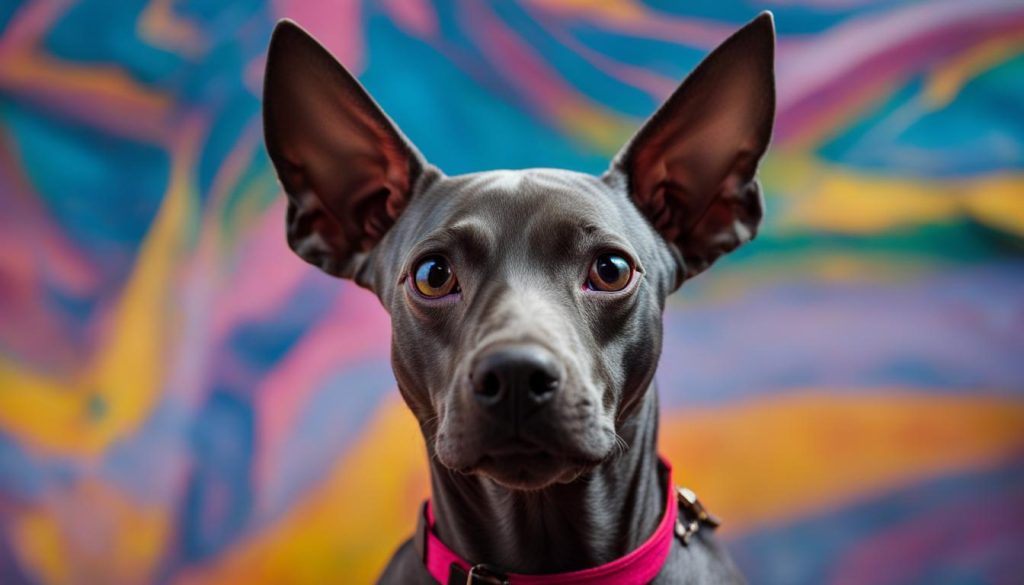
Hairless dog breeds have gained significant popularity in recent years, becoming a unique and sought-after choice for pet owners. These intriguing dogs captivate attention with their distinctive appearance and endearing qualities. Whether you are a dog enthusiast or simply looking for a companion with a one-of-a-kind charm, hairless dog breeds offer something truly special.
One of the reasons why hairless dog breeds are so appealing is their ability to stand out from the crowd. Their lack of fur makes them instantly recognizable and draws admiration wherever they go. These unique dogs become conversation starters, allowing owners to showcase their individuality and love for the extraordinary.
Another factor contributing to the appeal of hairless dog breeds is their increasing availability. As their popularity grows, more reputable breeders are specializing in these breeds, making them easier to find for those interested in owning one. Additionally, adoption centers and rescue organizations often have hairless dogs in need of loving homes, providing an opportunity for individuals to give these extraordinary dogs a second chance.
Table: Popular Hairless Dog Breeds
| Breed | Origin | Size | Temperament |
|---|---|---|---|
| Xoloitzcuintli (Mexican Hairless) | Mexico | Toy, Miniature, Standard | Devoted, Intelligent, Alert |
| Chinese Crested | China | Toy, Miniature | Affectionate, Lively, Playful |
| Peruvian Inca Orchid | Peru | Medium, Large | Gentle, Protective, Sensitive |
I was immediately captivated by the unique beauty of my hairless dog. People are always curious and fascinated by her appearance, and I love being able to share her story and answer their questions. She truly is a special companion who brings joy and companionship into my life.
If you’re considering adding a hairless dog to your family, it’s important to research and understand the specific needs of each breed. They may require additional care to protect their sensitive skin and provide the necessary grooming to maintain their health. However, the rewards of owning a hairless dog are immeasurable, as they become cherished members of the family and sources of endless love and devotion.
The Pros and Cons of Owning a Hairless Dog
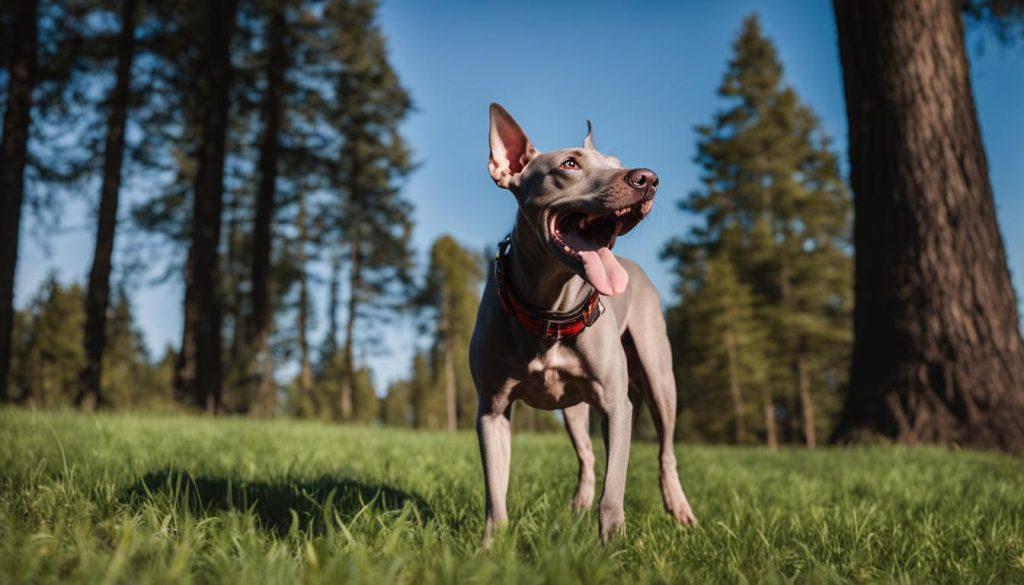
When it comes to owning a hairless dog, there are both advantages and disadvantages to consider. Hairless dogs can be a great choice for individuals with allergies, as they are often hypoallergenic. Their lack of fur means there is less dander and shedding, reducing the risk of triggering allergic reactions. Additionally, hairless dogs are typically low maintenance when it comes to grooming, as they don’t require regular brushing or hair trimming.
However, there are a few downsides to owning a hairless dog. Due to their lack of fur, these dogs are more prone to skin issues such as dryness, sunburn, and irritation. Special care must be taken to protect their sensitive skin from extreme temperatures and harmful UV rays. Additionally, some people may find their unique appearance less appealing compared to dogs with fur. It’s important to consider these factors and decide if you are willing to provide the necessary care and attention to a hairless dog.
Overall, owning a hairless dog can be a rewarding experience, but it is important to weigh the pros and cons before making a decision. If you are willing to provide the needed care and attention to their unique needs, a hairless dog can make a loving and loyal companion.
“Owning a hairless dog means less shedding and a hypoallergenic pet, but it also requires special care to protect their sensitive skin.” – Anonymous
Pros of Owning a Hairless Dog:
- Hypoallergenic nature makes them suitable for individuals with allergies
- Less shedding and dander
- Low maintenance grooming
Cons of Owning a Hairless Dog:
- Potential for skin issues such as dryness, sunburn, and irritation
- Unique appearance may not be appealing to everyone
- Special care required to protect their sensitive skin
| Pros | Cons |
|---|---|
| Hypoallergenic nature | Potential for skin issues |
| Less shedding and dander | Unique appearance may not be appealing to everyone |
| Low maintenance grooming | Special care required to protect their sensitive skin |
Finding the Perfect Hairless Dog Companion
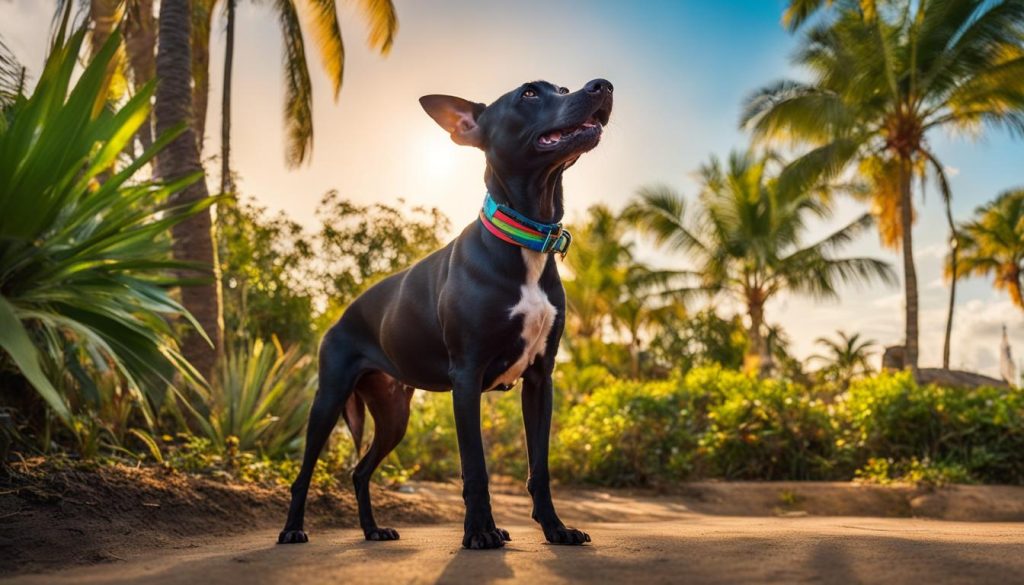
If you are considering adding a hairless dog to your family, there are several options available. Reputable breeders specialize in hairless dog breeds and can provide information on available puppies. Adoption centers and rescue organizations may also have hairless dogs in need of loving homes. When searching for the perfect hairless dog companion, it is essential to research breeders or organizations, ask for health clearances, and consider the specific needs of the breed.
When looking for hairless dog breeds for sale, it’s crucial to find a reputable breeder who prioritizes the health and well-being of their dogs. These breeders will have thorough knowledge of the breed, provide proper documentation, and offer ongoing support and guidance. Additionally, they will ensure that their puppies receive appropriate veterinary care, vaccinations, and socialization.
Adoption can be a rewarding option for bringing a hairless dog into your life. Many organizations specialize in the rescue and rehoming of specific breeds, including hairless dogs. By adopting, you provide a second chance to a dog in need and offer them a loving and caring environment. Adoption centers often conduct comprehensive assessments of the dogs’ temperament, health, and behavior, ensuring a suitable match for potential adopters.
Table: Comparison of Hairless Dog Adoption and Purchase
| Adoption | Purchase |
|---|---|
| Provides a second chance to a dog in need | Allows you to select a specific breed and puppy |
| Adoption fees typically cover vaccinations, spaying/neutering, and microchipping | Purchase price varies depending on the breed and breeder |
| Adopted dogs often come with behavioral assessments and basic training | Breeders may offer guidance and support but additional training may be required |
| Adoption centers may have a limited selection of hairless dogs | Breeders offer a wider variety of hairless dog breeds for sale |
Ultimately, whether you choose to adopt or purchase a hairless dog, it is important to ensure that you have the time, resources, and commitment required to care for these unique breeds. Hairless dogs may have specific needs, including regular skin care, protection from the elements, and proper nutrition. By thoroughly researching and considering your options, you can find the perfect hairless dog companion to join your family and bring joy to your life.
Caring for a Hairless Dog: Tips and Considerations
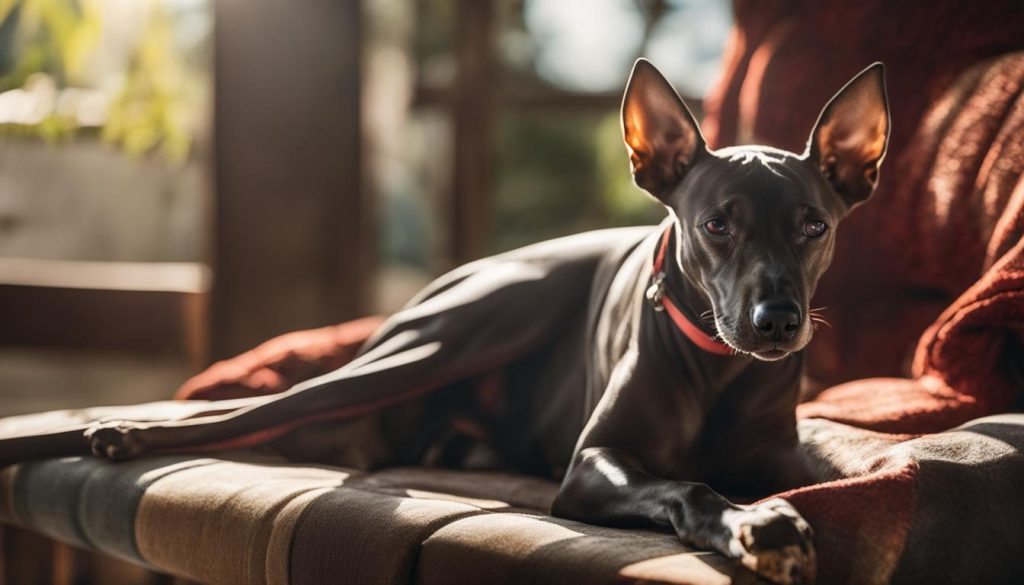
When it comes to caring for a hairless dog, there are several important factors to keep in mind. Due to their lack of fur, hairless dog breeds require special attention to maintain their skin health and overall well-being.
Skincare
Regular bathing is essential for hairless dogs to keep their skin clean and free from dirt and debris. It is recommended to use a gentle, hypoallergenic shampoo specifically formulated for dogs with sensitive skin. After bathing, it is important to thoroughly dry your hairless dog to prevent any moisture from causing skin irritation.
Moisturizing
Due to their unique skin composition, hairless dogs often require moisturizing to prevent dryness and maintain optimal skin health. Organic, fragrance-free moisturizers specially designed for hairless dogs can be applied regularly to keep their skin hydrated and supple.
Sun Protection
Hairless dog breeds are more susceptible to sunburn due to the lack of fur protection. It is important to keep your hairless dog out of direct sunlight during peak hours and provide them with shade when outdoors. Applying a pet-safe sunscreen to exposed areas, such as the ears and nose, can provide additional protection against harmful UV rays.
| Caring for a Hairless Dog: Tips and Considerations |
|---|
| Skincare: Regular bathing with a hypoallergenic shampoo and thorough drying. |
| Moisturizing: Applying organic, fragrance-free moisturizers regularly to prevent dryness. |
| Sun Protection: Keeping hairless dogs out of direct sunlight and applying pet-safe sunscreen. |
Hairless Dogs as Therapy and Emotional Support Animals
Hairless dogs have gained recognition for their potential as therapy or emotional support animals. Their unique appearance and calming presence make them well-suited for providing comfort and companionship to those in need. Many hairless dog owners have reported significant positive impacts on their mental health and well-being. However, it is important to note that the suitability of a hairless dog as a therapy or emotional support animal ultimately depends on their individual temperament and training.
As therapy animals, hairless dogs can offer emotional support to individuals struggling with anxiety, depression, or other mental health conditions. Their gentle nature and affectionate demeanor can provide comfort and a sense of security to those in emotional distress. Hairless dogs are often trained to recognize signs of distress and offer comfort through physical contact and companionship.
Emotional support animals play a vital role in providing comfort and emotional stability to their owners. For individuals with conditions such as post-traumatic stress disorder (PTSD) or autism spectrum disorder (ASD), having a hairless dog as an emotional support animal can offer a sense of safety and reduce symptoms. These dogs can provide a calming presence and offer unconditional love and support, which can greatly enhance the overall well-being of their owners.
To summarize, hairless dogs have shown great potential as therapy and emotional support animals. Their unique appearance and soothing presence make them well-suited to provide comfort and companionship to those in need. While individual temperament and training are important factors to consider, hairless dogs have the ability to significantly improve the lives of their owners and contribute to their overall emotional well-being.
The Future of Hairless Dog Breeds
As the demand for unique and hypoallergenic dog breeds continues to grow, the future for hairless dog breeds looks promising. These distinctive and captivating dogs have captured the hearts of many dog enthusiasts around the world. With their hypoallergenic nature and striking appearance, hairless dogs are becoming increasingly popular as companions and pets.
The future of hairless dog breeds lies in the hands of responsible breeders and organizations dedicated to their preservation and promotion. Through careful breeding practices and education about the breed, these passionate individuals ensure that hairless dogs will continue to have a lasting impact on the world of canine companionship. By maintaining the breed’s unique qualities and health standards, they ensure that future generations of hairless dogs will delight and captivate dog lovers for years to come.
“Hairless dog breeds are a testament to the marvels of canine diversity. Their lack of fur and distinctive appearance make them unique pets that stand out from the crowd.”
Furthermore, as more people become aware of the hypoallergenic qualities of hairless dog breeds, the demand for these dogs is expected to rise. Individuals with allergies or sensitivities to pet dander are increasingly seeking out hypoallergenic dog breeds, and hairless dogs fit the bill perfectly. Their lack of fur significantly reduces the amount of allergens they produce, providing a viable option for those who want to enjoy the companionship of a dog without the risk of allergic reactions.
To summarize, the future of hairless dog breeds is bright and promising. With their unique qualities, striking appearance, and hypoallergenic nature, these dogs are gaining popularity around the world. Responsible breeders and organizations play a crucial role in ensuring the preservation and promotion of hairless dog breeds. As more people discover the joys of these captivating dogs, the demand for hairless dog breeds will continue to grow, ensuring their place in the future of canine companionship.
Choosing the Right Hairless Dog Breed for You
Considerations when Selecting a Hairless Dog Breed
When choosing a hairless dog breed, it is important to consider several factors that will ensure a compatible match between you and your new furry friend. These considerations include the size of the breed, its temperament, activity level, and grooming requirements. By thoroughly researching each breed and understanding their unique qualities, you can make an informed decision that aligns with your lifestyle and preferences.
Size: Hairless dog breeds come in a variety of sizes, ranging from small to large. If you live in an apartment or have limited space, a smaller breed like the Chinese Crested or the Peruvian Inca Orchid may be a better fit. However, if you have a larger living space and enjoy outdoor activities, a larger breed like the Mexican Hairless Dog (Xoloitzcuintli) may be more suitable.
Temperament: Each hairless dog breed has its own distinct temperament. Some breeds are known for being calm and affectionate, while others are more energetic and playful. Consider your own personality and preferences when selecting a breed that matches your desired level of interaction and activity.
Grooming Requirements: Although hairless dogs have minimal to no fur, they still require regular grooming to maintain their skin health. Make sure you understand the specific grooming needs of the breed you are interested in, such as regular bathing, moisturizing, and sun protection. Additionally, consult with a veterinarian familiar with hairless breeds for guidance on proper grooming techniques and products.
| Breed | Size | Temperament | Grooming Requirements |
|---|---|---|---|
| Chinese Crested | Small | Affectionate, lively | Regular bathing, sunscreen |
| Peruvian Inca Orchid | Small to medium | Calm, loyal | Occasional bathing, moisturizing |
| Mexican Hairless Dog (Xoloitzcuintli) | Small to large | Affectionate, intelligent | Regular bathing, skin moisturizing |
By considering these factors and conducting thorough research, you can choose the right hairless dog breed that will complement your lifestyle, personality, and preferences. Remember, each breed has its own unique qualities and requirements, so take the time to find the perfect fit for you.
The Benefits of Owning a Hairless Dog
Owning a hairless dog can be a truly delightful experience for any dog lover. These unique and fascinating creatures offer a range of benefits that make them an appealing choice for individuals and families alike.
Low Allergenic Potential and Minimal Shedding
One of the main advantages of hairless dog breeds is their hypoallergenic nature. Their lack of fur means they produce fewer allergens, making them a great option for individuals with allergies or sensitivities to pet dander. Additionally, their minimal shedding reduces the amount of pet hair in the house, making them a cleaner and more allergy-friendly choice.
Distinctive Appearance and Unique Personality
Hairless dogs have an undeniable allure due to their distinctive appearance. Their smooth, soft skin and unique body structure make them stand out in a crowd and often become a topic of conversation. Their unusual appearance combined with their affectionate and loyal personality makes them a truly one-of-a-kind companion.
Close Bond and Companionship
When you welcome a hairless dog into your home, you can expect a deep and lasting bond. These dogs are known for their loyalty and devotion to their owners. They thrive on affection and love being in the company of their human family members. Whether you’re looking for a cuddle buddy on the couch or a jogging partner, a hairless dog will be there to provide endless love and companionship.
| Benefits of Owning a Hairless Dog |
|---|
| Low Allergenic Potential and Minimal Shedding |
| Distinctive Appearance and Unique Personality |
| Close Bond and Companionship |
Wrapping Up
Throughout this article, I have delved into the fascinating world of hairless dog breeds. These unique and captivating dogs offer dog lovers a distinctive choice that stands out from traditional breeds. Their rich history, distinctive appearance, and hypoallergenic qualities make them a popular option for individuals with allergies or those seeking a low-shedding companion.
If you are considering adding a hairless dog to your family, there are various options available. Reputable breeders specialize in hairless dog breeds and can provide information on available puppies. Additionally, adoption centers and rescue organizations may have hairless dogs in need of loving homes.
Caring for a hairless dog requires special attention and consideration. Due to their lack of fur, their skin is more susceptible to dryness and sunburn. Regular grooming, moisturizing, and sun protection are essential for maintaining their skin health. Consulting with a veterinarian familiar with hairless breeds will help create a proper care routine.
Whether you are drawn to hairless dog breeds for their unique appearance or their hypoallergenic qualities, understanding their characteristics, care requirements, and availability is crucial. By delving into the world of hairless dog breeds, you can find the perfect four-legged companion to enrich your life and bring joy to your home.
FAQ
Are hairless dog breeds hypoallergenic?
Yes, hairless dog breeds are often hypoallergenic, making them ideal for individuals with allergies.
Do hairless dog breeds require less grooming?
Yes, hairless dogs require less grooming in terms of coat care, but they still require regular bathing and skincare.
What are the advantages of owning a hairless dog?
Some advantages include hypoallergenic qualities, less fur shedding, and a unique and captivating appearance.
Do hairless dog breeds have any specific care requirements?
Yes, hairless dogs may require additional skincare, protection from sunburn, and special care in extreme temperatures.
Can hairless dogs be therapy or emotional support animals?
Hairless dogs have been recognized for their potential as therapy or emotional support animals, but suitability depends on their individual temperament and training.
Where can I find hairless dog breeds for adoption or purchase?
Reputable breeders specialize in hairless dog breeds and can provide information on available puppies. Adoption centers and rescue organizations may also have hairless dogs in need of loving homes.
What special care do hairless dog breeds require?
Hairless dogs require regular bathing, moisturizing, sun protection, and potential extra protection in colder climates to ensure their well-being.
How do I choose the right hairless dog breed for me?
Consider factors such as size, temperament, activity level, and grooming requirements when selecting a hairless dog breed. Researching breed-specific characteristics and talking to experienced owners or breeders can provide valuable insights.
What are the benefits of owning a hairless dog?
Benefits include hypoallergenic qualities, less fur shedding, a unique appearance, and their affectionate and loyal nature.


